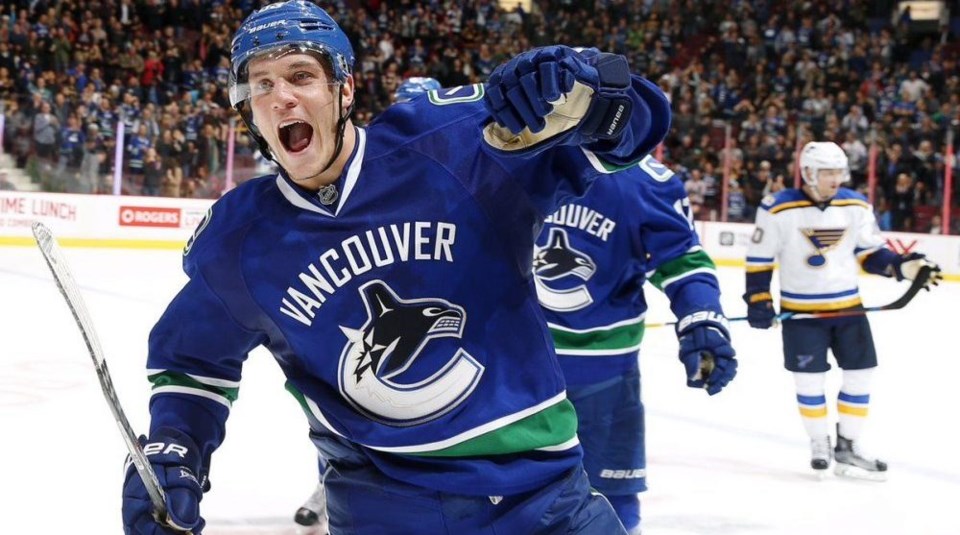The last thing the Canucks wanted was for the Bo Horvat contract negotiations to become a distraction heading into training camp. With the Young Stars prospect showcase tournament starting tonight, the Canucks got the deal just under the wire, allowing fans to watch their prospects play with the peace of knowing Horvat’s deal was done.
Of course, the deal itself is somewhat distracting, as it is distractingly large. While rumours abounded that the Canucks were going to sign Horvat to a short-term bridge deal, connecting his entry-level contract to his big-money contract with a prove-yourself contract, the Canucks instead locked up Horvat long term.
It’s a six-year contract with an average annual value of $5.5 million. That makes Horvat the fourth highest paid player on the Canucks in the coming season behind the Sedins ($7 million) and Loui Eriksson ($6 million).
This contract provides a capstone to Jim Benning’s off-season work, an off-season that has somewhat rehabilitated his reputation. But, in some ways, this contract harkens back to the ones that got him that reputation in the first place: he’s paying for what he hopes Horvat could become instead of what he’s proven so far.
That got him into trouble with the Luca Sbisa and Brandon Sutter contracts. He paid Sbisa like a top-four defenceman and Sutter like a second-line centre when neither had proven themselves to be worth that payday and, in fact, had shown that they were unlikely to ever be worth their contracts.
Likewise, Horvat will now be getting paid like a first-line forward, when he hasn’t quite proven himself to be a legitimate first-line centre; leading a terrible, low-scoring team like the 2016-17 Canucks in points does not make him a star. Benning is instead paying for potential, believing that Horvat can become a first-line centre or, at worst, a high-end second-line centre. The difference when it comes to Horvat, is that he’s a much safer bet.
Horvat has shown continual improvement in his game in his short career. His skating was an issue when he was drafted, but he worked his tail off with a skating coach to turn it into one of the strengths of his game. People questioned whether he could put up points at the NHL level, but with drive and determination led the Canucks in scoring this past season.
Now there are two questions being posed to Horvat as he enters the 2017-18 season. The first is one that no one expected when he was drafted: can he improve his defensive game? The second is whether he can produce like a legitimate first-line centre when his line becomes the focal point of the opposition’s shutdown efforts.
Teams won’t be keying in on the Sedins when they face the Canucks this season: they’ll be looking at Horvat’s line and putting together a gameplan to shut him down. Can he take another step forward in both his offensive and defensive game in the coming season under that type of pressure?
It’s hard to bet against Horvat, as he proves people wrong every step of the way. So, while the contract seems like an overpayment based on his current point production and two-way struggles, it could become a steal heading into the latter half of the contract.
In fact, if Horvat gets a larger role at even-strength and on the power play, 60+ points is not out of the question this season, making his contract perfectly in line with others around the league.
Really, the biggest disappointment is that Horvat didn’t sign for $5.3 million to match his jersey number. If he wanted more, he should have picked a different number.



